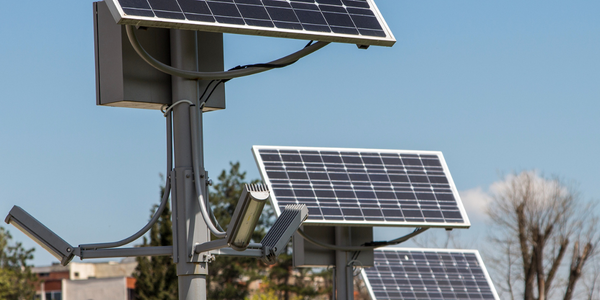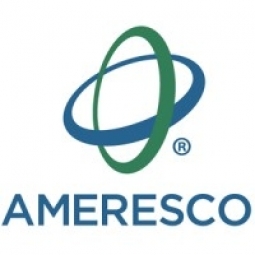技术
- 基础设施即服务 (IaaS) - 云存储服务
- 其他 - 电池
适用行业
- 国家安全与国防
- 可再生能源
用例
- 租赁金融自动化
- 篡改检测
服务
- 系统集成
关于客户
该项目的客户是夏威夷欧胡岛的居民,他们将受益于 Kūpono Solar 提供的清洁、可再生能源。该项目预计将为欧胡岛约 10,000 户家庭供电,使未充分利用的土地得到长期、可持续的利用。除了提供清洁能源外,该项目预计还将减少夏威夷环境中超过 50,000 吨的二氧化碳排放,符合该州到 2045 年 100% 可再生能源和碳中和的目标,稳定 HECO 客户的能源成本,并促进当地就业和商业经济。
挑战
国防部 (DoD) 正在寻求夏威夷的长期能源安全举措,特别是欧胡岛。面临的挑战是利用夏威夷州欧胡岛珍珠港-希卡姆联合基地海军西湖附件内约 131 英亩未充分利用的土地。目标是提供关键的能源升级,并与夏威夷州到 2045 年 100% 可再生能源和碳中和的目标保持一致。该项目预计将于 2024 年第一季度开始运营。挑战还包括需要稳定夏威夷电力 (HECO) 客户的能源成本,减少碳排放,并促进当地就业和商业经济。
解决方案
Ameresco 和 Bright Canyon Energy (BCE) 成立了一家名为 Kūpono Solar 的合资企业,专注于欧胡岛的可再生能源、能源安全和复原力。他们与美国海军签署了为期 37 年的土地租约,将未充分利用的土地用于该项目。凭借在夏威夷开发可再生能源和基础设施系统 20 年的综合经验,他们正在开发大规模太阳能和电池储能系统。该系统旨在为当地公用事业公司夏威夷电力 (HECO) 的电网提供可持续的可再生能源。该项目包括一个42兆瓦的太阳能电池阵列和一个42兆瓦/168兆瓦时(持续四小时)的锂离子电池存储系统。这些电池的设计目的是在日落时间之后储存太阳能。
运营影响
数量效益

Case Study missing?
Start adding your own!
Register with your work email and create a new case study profile for your business.
相关案例.

Case Study
Remote Monitoring & Predictive Maintenance App for a Solar Energy System
The maintenance & tracking of various modules was an overhead for the customer due to the huge labor costs involved. Being an advanced solar solutions provider, they wanted to ensure early detection of issues and provide the best-in-class customer experience. Hence they wanted to automate the whole process.

Case Study
Vestas: Turning Climate into Capital with Big Data
Making wind a reliable source of energy depends greatly on the placement of the wind turbines used to produce electricity. Turbulence is a significant factor as it strains turbine components, making them more likely to fail. Vestas wanted to pinpoint the optimal location for wind turbines to maximize power generation and reduce energy costs.

Case Study
Siemens Wind Power
Wind provides clean, renewable energy. The core concept is simple: wind turbines spin blades to generate power. However, today's systems are anything but simple. Modern wind turbines have blades that sweep a 120 meter circle, cost more than 1 million dollars and generate multiple megawatts of power. Each turbine may include up to 1,000 sensors and actuators – integrating strain gages, bearing monitors and power conditioning technology. The turbine can control blade speed and power generation by altering the blade pitch and power extraction. Controlling the turbine is a sophisticated job requiring many cooperating processors closing high-speed loops and implementing intelligent monitoring and optimization algorithms. But the real challenge is integrating these turbines so that they work together. A wind farm may include hundreds of turbines. They are often installed in difficult-to-access locations at sea. The farm must implement a fundamentally and truly distributed control system. Like all power systems, the goal of the farm is to match generation to load. A farm with hundreds of turbines must optimize that load by balancing the loading and generation across a wide geography. Wind, of course, is dynamic. Almost every picture of a wind farm shows a calm sea and a setting sun. But things get challenging when a storm goes through the wind farm. In a storm, the control system must decide how to take energy out of gusts to generate constant power. It must intelligently balance load across many turbines. And a critical consideration is the loading and potential damage to a half-billion-dollar installed asset. This is no environment for a slow or undependable control system. Reliability and performance are crucial.

Case Study
Remote Monitoring and Control for a Windmill Generator
As concerns over global warming continue to grow, green technologies are becoming increasingly popular. Wind turbine companies provide an excellent alternative to burning fossil fuels by harnessing kinetic energy from the wind and converting it into electricity. A typical wind farm may include over 80 wind turbines so efficient and reliable networks to manage and control these installations are imperative. Each wind turbine includes a generator and a variety of serial components such as a water cooler, high voltage transformer, ultrasonic wind sensors, yaw gear, blade bearing, pitch cylinder, and hub controller. All of these components are controlled by a PLC and communicate with the ground host. Due to the total integration of these devices into an Ethernet network, one of our customers in the wind turbine industry needed a serial-to-Ethernet solution that can operate reliably for years without interruption.

Case Study
Temperature monitoring for vaccine fridges
Dulas wanted a way to improve the reliability of the cold chain, facilitating maintenance and ensuring fewer vaccines are spoiled. Dulas wanted an M2M solution which would enable them to record and report the temperature inside vaccine refrigerators.

Case Study
IoT Powering A New Way to Light Streets with Bifacial Solar Panels
When James Meringer’s commercial contracting business experienced a rapid increase in solar projects, he also saw an opportunity to extend the benefits of solar by using the bifacial solar panels he’d become familiar with in new ways. Bifacial solar panels enable sunlight from both sides of the panel, making it a more efficient harvest of solar power. Seeing the panel’s power, James and his team set out to use the same technology for street lighting. Until now, solar street lights have served as utilitarian solutions that force designers to choose between form and function. The Mira Bella Energy team has changed that.



